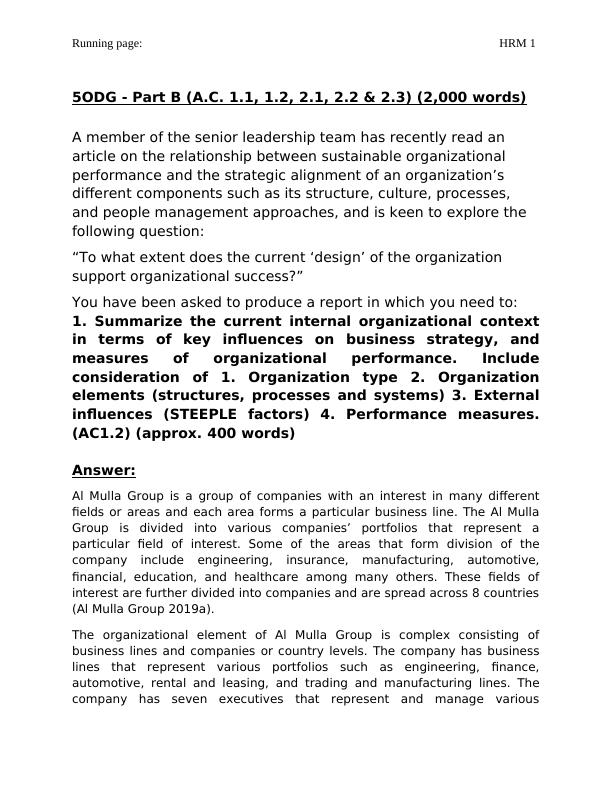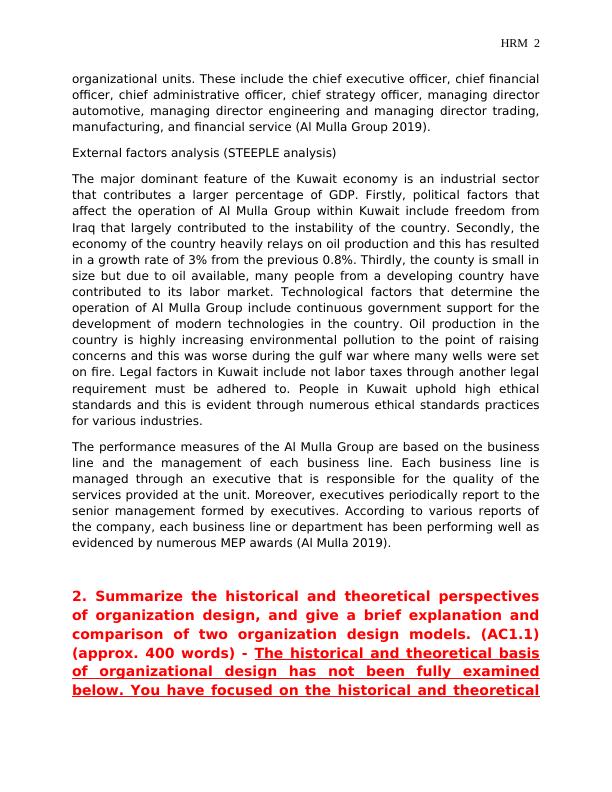Relationship between Organization Design and People Management
To what extent does the current 'design' of the organization support organizational success?
8 Pages2774 Words66 Views
Added on 2023-01-11
About This Document
This document evaluates the relationship between organization design and people management strategies. It discusses the impact of organizational structure on work processes, productivity, and workforce. It also provides recommendations for HR strategies and practices to support and improve strategic alignment. Additionally, it explores the link between organization design and people management and development strategies.
Relationship between Organization Design and People Management
To what extent does the current 'design' of the organization support organizational success?
Added on 2023-01-11
ShareRelated Documents
End of preview
Want to access all the pages? Upload your documents or become a member.
Organizational Context and Design in Al Mulla Group
|11
|2816
|51
Management Accounting: Roles and Importance of Professional Accountants in Businesses
|12
|3744
|386
Globalization Challenges and Risk Management in Siemens
|10
|2273
|219
Analysis of VinFast's Business and Business Environment
|16
|5619
|56



